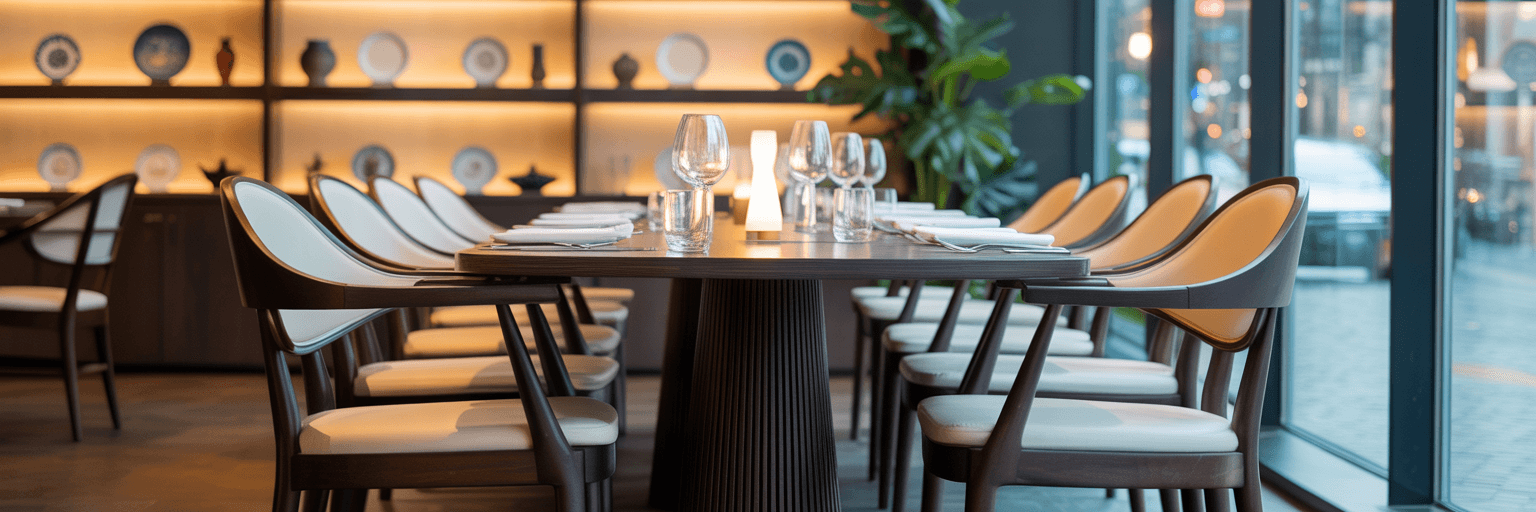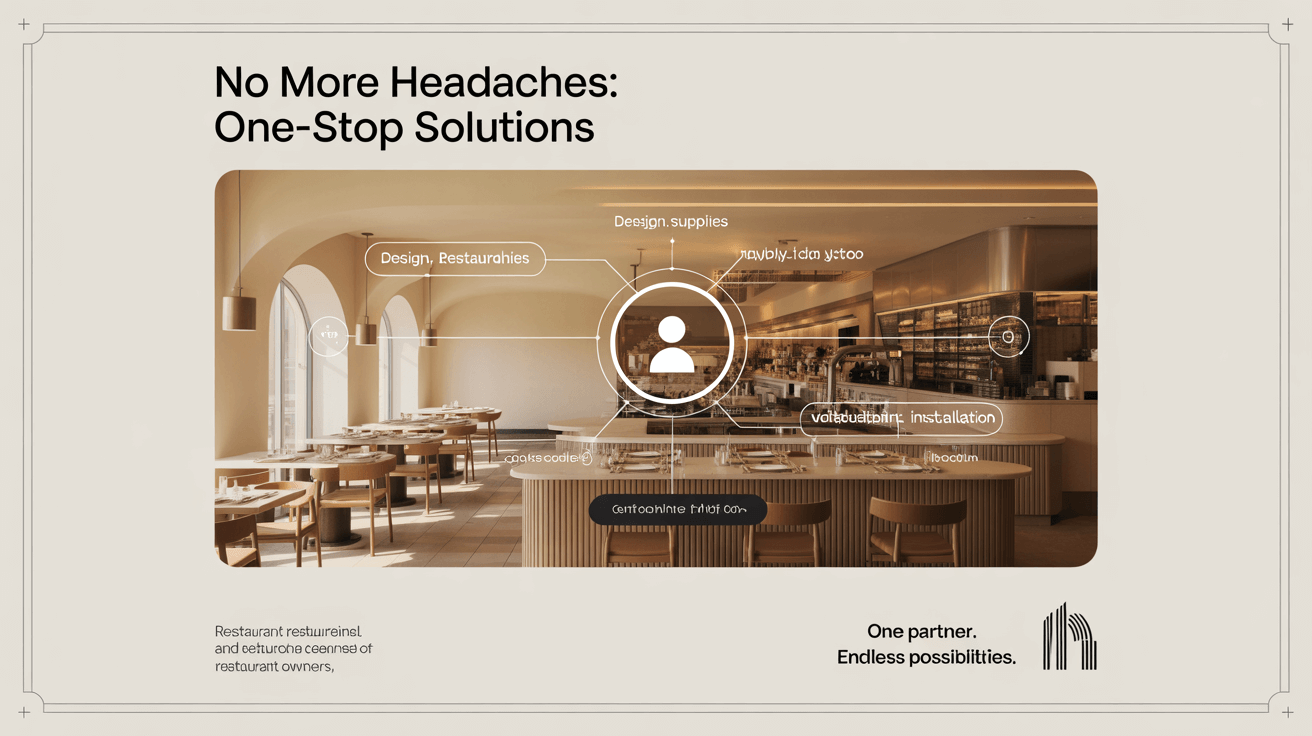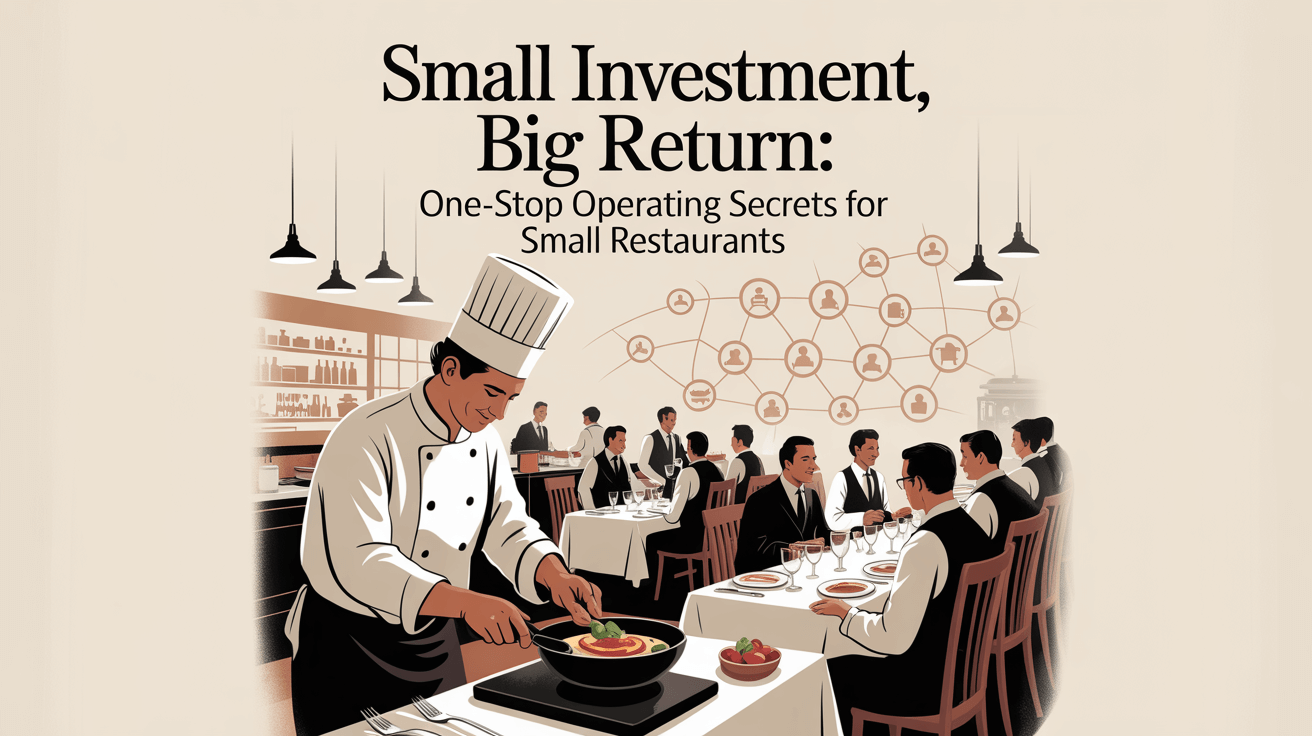where to buy restaurant furniture reveals the top channels—from direct factories to online specialists—so you get quality fixtures at the best price. But here’s the kicker… choosing the right source transforms décor and cost savings alike.
1. What direct manufacturers offer restaurant furniture?
● Local millworks crafting custom tables and booths
● Steel fabricators producing frames and footrests
● Upholstery workshops making commercial seating
● Modular factories supplying standardized runs
Ready for the good part? factory-direct often cuts 20–30% markup.
| Manufacturer Type | Product Focus | MOQ |
|---|---|---|
| Millworks | Custom wood furnishings | 5–10 units |
| Steel Shops | Metal frames | 10–20 units |
2. How do wholesalers simplify buying?
● Aggregate brands into a single catalog
● Maintain warehouses for quick fulfillment
● Offer design previews and samples
● Provide consolidated invoicing
What’s the real story? wholesalers balance choice with speed.
3. Which online platforms serve B2B buyers?
● Alibaba connecting to global factories
● Amazon Business for vetted suppliers
● Faire and Tundra with net-60 payment terms
● Wayfair Professional offering hospitality lines
This is where it gets interesting… online reach expands options but needs vetting.
4. Which showrooms cater to hospitality?
● Regional furniture marts featuring local makers
● Trade shows like HD Expo and NeoCon
● Brand showrooms (e.g. Restoration Hardware Commercial)
● Booking agents with negotiated rates
But here’s the kicker… seeing and touching confirms quality.
| Showroom Type | Access | Cost |
|---|---|---|
| Regional Marts | Walk-in/RSVP | Free |
| Trade Shows | Expo pass | $50–$200 |
5. How do chains centralize procurement?
● Corporate buying teams lock in pricing
● Preferred-vendor agreements guarantee stock
● Bulk logistics reduce shipping fees
● Standard specifications maintain brand look
Ready for the good part? scale unlocks deeper discounts.
6. Where do independents find deals?
● Salvage yards repurposing venue fixtures
● Liquidation sales of closed restaurants
● Local classifieds like Craigslist
● Artisan markets for small-batch pieces
What’s the real story? creative sourcing stretches tight budgets.
7. What custom design firms serve restaurants?
● Hospitality-focused interior studios
● Architects integrating seating into layouts
● Turnkey firms managing sourcing and install
● Boutique shops crafting unique accents
This is where it gets interesting… custom design elevates brand presence.
| Firm Type | Service Scope | Fee Model |
|---|---|---|
| Design Studios | Concept to install | % of project |
| Turnkey Firms | Sourcing to setup | Lump-sum quote |
8. What rental and leasing options exist?
● Event rental companies for pop-ups
● Short-term furniture leases for flexibility
● Rent-to-own programs easing capital strain
● Seasonal décor packages from stylists
But here’s the kicker… rentals minimize upfront investment.
9. How do purchasing co-ops benefit restaurants?
● Pool orders for volume discounts
● Shared warehousing cuts storage fees
● Collective negotiation powers better terms
● Exclusive co-op product lines available
Ready for the good part? co-ops amplify purchasing clout.
10. What B2B portals streamline orders?
● Faire offering net-60 payment terms
● Tundra charging zero transaction fees
● Handshake curating specialty vendors
● Procurify automating approvals and tracking
This is where it gets interesting… portals simplify reorders and spend.
| Platform | Payment Terms | Ideal Use |
|---|---|---|
| Faire | Net-60 | Small independents |
| Tundra | No fees | Bulk buyers |
11. How do local networks aid sourcing?
● Chamber of commerce referrals to makers
● Hospitality associations vetting suppliers
● Networking events linking peers and vendors
● Peer recommendations reducing risk
What’s the real story? local ties deliver faster support.
12. What factors determine supplier choice?
● Lead times for seasonal peaks
● Minimum order quantities matching scale
● Quality certifications (BIFMA, ISO)
● Warranty and post-sale support terms
But here’s the kicker… vetting up front prevents costly issues.
13. What delivery and installation services are available?
● White-glove delivery with assembly
● Curbside drop requiring on-site setup
● Licensed crews anchoring and leveling
● Scheduled coordination with build-outs
Ready for the good part? turnkey options speed openings.
14. How is ROI calculated on furnishings?
● Cost per seat over expected lifespan
● Annual maintenance and repair spend
● Warranty versus replacement cycles
● Impact on guest satisfaction and repeat visits
This is where it gets interesting… ROI metrics guide smarter investments.
| ROI Metric | Calculation | Benefit |
|---|---|---|
| Cost per Seat | Total ÷ seats | Budget forecasting |
| Maintenance | Annual spend | True lifecycle cost |
15. How do restaurants optimize ongoing sourcing?
● Annual supplier performance reviews
● Analytics on purchase and usage trends
● Maintain backup vendors for critical items
● Negotiated seasonal volume discounts
What’s the real story? continuous refinement secures best value.
Conclusion
Restaurants buy furniture through a mix of factories, distributors, showrooms, online B2B portals, and co-ops. Vet partners, leverage scale, and track ROI to ensure fixtures that delight guests and protect your budget.
FAQ
Q1: Can I source directly from overseas factories?
Yes—platforms like Alibaba connect you worldwide; always verify samples and timelines.
Q2: Are rentals cost-effective?
Rentals reduce upfront capital and offer flexible design updates.
Q3: How do co-ops deliver savings?
Co-ops pool orders to unlock volume discounts and lower per-unit costs.
Q4: Should I hire a design firm?
Design firms boost cohesion but add service fees compared to self-sourcing.
Q5: Which warranty terms matter most?
Aim for three-year frame and upholstery coverage for commercial durability.






